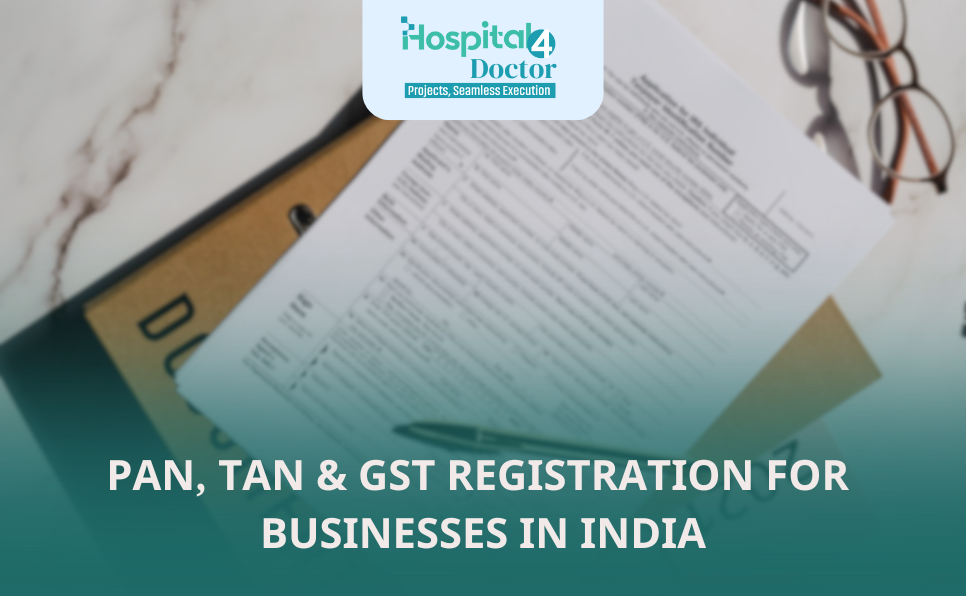Starting a business is exciting, but navigating the legal and tax landscape can often feel overwhelming. Among the most essential compliance requirements in India are PAN (Permanent Account Number), TAN (Tax Deduction and Collection Account Number), and GST (Goods and Services Tax) registration. These three registrations form the foundation of your business’s legal and tax identity.
In this guide, we’ll simplify each of these, explain their significance, and provide step-by-step registration instructions—tailored for startups, small businesses, and entrepreneurs alike.
1. What Are PAN, TAN, and GST?
PAN (Permanent Account Number)
A 10-character alphanumeric code issued by the Income Tax Department. It acts as a unique identifier for all financial transactions and tax filings for individuals and businesses.
Purpose: Tax compliance, identity verification for financial dealings, and return filing.
TAN (Tax Deduction and Collection Account Number)
A 10-digit alphanumeric number mandatory for businesses that deduct tax at source (TDS). It is used to deposit TDS to the government and file TDS returns.
Purpose: Required for employers or businesses paying salaries, contractor fees, rent, etc.
GST (Goods and Services Tax)
An indirect tax applicable to the supply of goods and services. GST replaced various taxes such as VAT, excise duty, and service tax.
Purpose: Allows businesses to collect GST from customers and claim input tax credits.
2. Why Are These Registrations Critical?
Without PAN, TAN, or GST, your business risks:
Non-compliance penalties
Inability to deduct or remit taxes
Legal challenges
Ineligibility for bank loans, tenders, or partnerships
Each plays a unique role in building your business’s legal and financial credibility.
3. PAN, TAN & GST Needs by Business Type
A. Sole Proprietorship
PAN: Proprietor’s personal PAN is used.
TAN: Needed if the proprietor deducts TDS.
GST: Required if turnover exceeds ₹40 lakh (₹10 lakh for special category states) or for interstate supply.
Example: Kavita runs a boutique in Jaipur. With ₹50 lakh turnover and employees on payroll, she needs TAN and GST registration.
B. Partnership Firm
PAN: Separate PAN for the firm.
TAN: Mandatory for TDS.
GST: Required based on turnover or interstate business.
Example: Rahul and Priya operate “Sweet Delights” across states via e-commerce. They need GST and TAN.
C. Private Limited Company
PAN, TAN, GST: All are mandatory regardless of turnover, especially if selling online or hiring staff.
Example: InnoVate Pvt. Ltd. works with freelancers and sells SaaS products online. They must register for PAN, TAN, and GST.
D. LLP (Limited Liability Partnership)
PAN: Unique PAN required.
TAN: Needed for tax deduction.
GST: Mandatory for interstate transactions or exceeding the turnover limit.
Example: An IT services LLP serving clients across India must obtain GST registration.
4. How to Register for PAN, TAN, and GST
A. PAN Registration (For Business)
Visit NSDL PAN Portal
Select Form 49A (Indian businesses).
Fill in business details.
Upload documents (COI, ID/address proof).
Pay ₹107 (approx.).
Receive PAN via post in 15 days.
B. TAN Registration
Visit NSDL TAN Portal
Fill Form 49B.
Upload required proofs.
Pay ₹65 (approx.).
TAN will be issued in 7–10 days.
C. GST Registration
Go to GST Portal
Click ‘Register Now’ and select taxpayer category.
Fill Part-A with PAN, email, and phone.
Complete Part-B with documents.
Receive ARN (Application Reference Number).
After approval, receive GSTIN.
5. Documents Required
PAN:
Certificate of Incorporation
Proof of business address
Identity proof of partners/directors
TAN:
Business registration certificate
Identity/address proof of signatory
GST:
PAN of business
Proof of business address (rent agreement, utility bill)
Bank statement or cancelled cheque
Digital signature of owner/partner/director
6. Pro Tips for Entrepreneurs
✅ Know your thresholds (e.g., ₹40 lakh for GST).
✅ Keep all documents scanned and ready.
✅ Use updated browsers for smooth application.
✅ Consult a tax professional if unsure.
7. Common Mistakes & Solutions
❌ Submitting incorrect data
✅ Double-check all fields before submitting forms.
❌ Missing mandatory fields or documents
✅ Refer to the official checklists or portal guidelines.
❌ Technical glitches during online registration
✅ Clear browser cache or switch to a different browser. Use helpdesk if needed.
Conclusion
Registering for PAN, TAN, and GST is more than just a compliance task—it’s your business’s foundation in the legal and financial ecosystem of India. Taking the right steps early ensures smoother operations, better credibility, and room to grow.
Start your entrepreneurial journey with confidence. Stay compliant, stay ahead!

